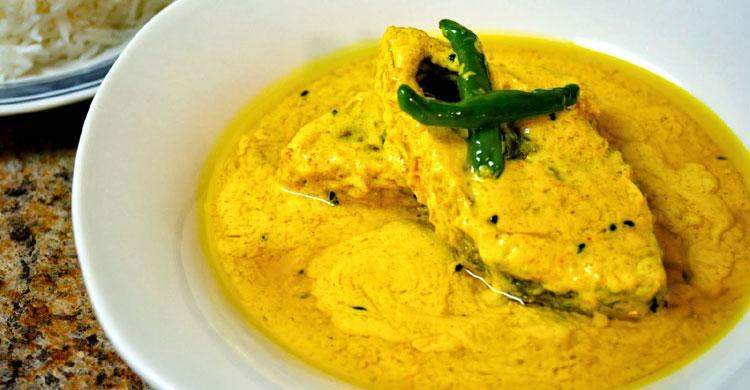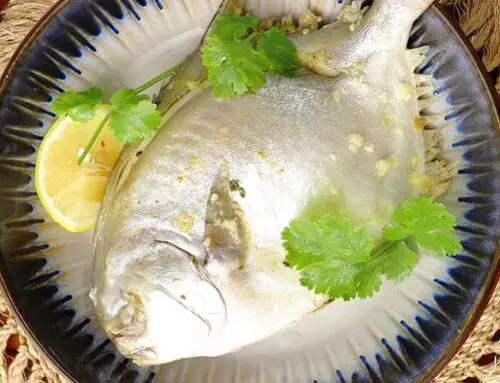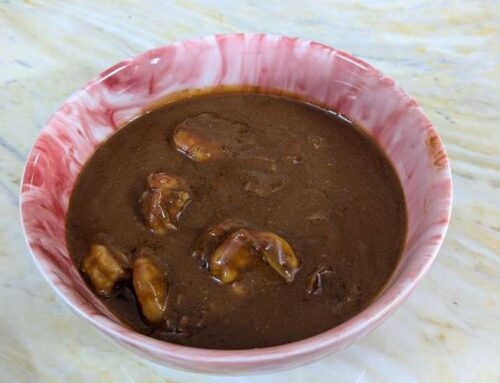Bengali cuisine is a treasure trove of flavors, traditions, and stories that come alive on a plate. One dish that encapsulates the essence of this culinary heritage is the Mustard Hilsa. This delectable delight not only pleases the palate but also weaves a narrative of history, culture, and the artistry that defines Bengali cooking.
A Symphony of Flavors: The Mustard Magic
At the heart of this culinary masterpiece lies mustard, a humble ingredient with a robust personality. Mustard seeds, whether brown, black, or yellow, are integral to Bengali cuisine. These tiny powerhouses of flavor add depth, piquancy, and a subtle zing to dishes. But it’s in the marriage of mustard with the silvery richness of hilsa fish that the magic truly happens.
Hilsa, often referred to as the “King of Fishes,” is a prized catch in Bengal and holds a revered place in Bengali culture. Its firm, oily flesh lends itself beautifully to the intricate interplay of flavors in the dish. The unique amalgamation of mustard’s sharpness and hilsa’s buttery texture results in a dish that’s nothing short of a symphony of flavors dancing on the tongue.
A Culinary Journey Through History
To truly understand the significance of Mustard Hilsa, one must delve into its historical roots. The love affair between mustard and hilsa dates back centuries, and each bite of this dish is a testament to the region’s rich past.
The practice of marinating fish in mustard paste isn’t just about creating a delectable dish; it’s also a preservation technique with historical roots. In the days before refrigeration, mustard acted as a natural preservative, extending the shelf life of the fish and allowing it to be enjoyed even during lean times. This culinary innovation was born out of necessity but has evolved into an art form that celebrates the essence of Bengal.
Celebration of Culture and Tradition
Bengali cuisine is inseparable from the culture and traditions that have shaped it. Mustard Hilsa isn’t just a dish; it’s a celebration of Bengali identity. The process of preparing and sharing this dish is steeped in tradition, often bringing families together to create lasting memories.
Whether it’s the meticulous preparation of the mustard paste using a traditional stone grinder or the skillful art of wrapping the fish in banana leaves for cooking, every step in crafting Mustard Hilsa is an ode to the wisdom passed down through generations. As the aroma of the dish fills the air and the family gathers around, stories are shared, laughter echoes, and bonds are strengthened.
A Feast for the Senses
Mustard Hilsa is a feast not just for the taste buds but for all the senses. The vibrant yellow hues of the mustard paste, the tantalizing scent that wafts from the kitchen, and the anticipation that builds as the dish is unveiled—all these elements come together to create an experience that goes beyond mere sustenance.
The first bite is a revelation—a burst of flavors that tells a story of a land where culinary prowess is a way of life. The smoothness of the hilsa contrasts perfectly with the punch of mustard, creating a balance that is both satisfying and memorable.
Beyond Borders: Sharing the Legacy
While Mustard Hilsa is deeply rooted in Bengali culture, its fame has transcended geographical boundaries. In the age of global connectivity, food enthusiasts from all corners of the world have had the chance to savor this unique dish. As they do, they not only taste the flavors but also become a part of the narrative that has shaped Mustard Hilsa over centuries.
In restaurants and homes around the world, chefs and home cooks alike strive to recreate the magic of Mustard Hilsa. And as they do, they pay homage to the history, tradition, and culture that have given birth to this masterpiece.
In Conclusion
The story of Mustard Hilsa is more than just a culinary tale—it’s a testament to the heritage, culture, and artistry that define Bengali cuisine. With each bite, one takes a journey through time, savoring the flavors that have been perfected over generations. It’s a dish that not only tantalizes the taste buds but also brings people together, celebrating the richness of a culture that has always found its expression through food. So, the next time you savor the Mustard Hilsa, remember that you’re partaking in a legacy that has stood the test of time, continuing to weave stories through flavors.
Whole Steamed Hilsa
My name is Jesmin Sultana. I am a homemaker and a business entrepreneur. I started my business three years ago. I live in Dhaka, specifically in Nikunja, with my family. We are a family of three members, and I have a 12-year-old daughter. Yes, I have many memories associated with this recipe. There was one day when I prepared it for my guests, but due to lack of awareness, it got burnt badly and couldn’t be served. Interestingly, this dish holds a special place among my family and relatives, as it is one of the most demanded items. Whenever I invite guests, they eagerly ask for this particular recipe.
Ingredients
- 1 hilsa fish large size
- 5 tablespoons mustard oil
- 3 tablespoons white mustard
- 1 tablespoon black mustard
- 1/2 teaspoon turmeric powder
- 1/2 teaspoon chilli powder
- 6-7 green chilies
- 1/2 teaspoon nigella seeds kalonji
- salt to taste
Instructions
- Cut and clean one Hilsa fish according to your preference. Wash it thoroughly.
- Soak white and black mustard in water for 10-15 minutes.
- After soaking, blend the soaked mustard along with two green chilies, salt, and a bit of the soaked water using a blender. Alternatively, you can grind it on a grinding stone. If blended, keep about 1/2 cup of water aside.
- In a medium-sized pot, heat 1/4 cup of mustard oil until it's smoking. Add one green chilli slit from the middle and a pinch of nigella seeds.
- Now add turmeric and chilli powder. Stir-fry for about 20 seconds.
- Add the mustard paste along with turmeric and chilli powder. Sauté for 20 seconds.
- Then, add the fish pieces and gently stir for 4-5 minutes with a little salt. The fish pieces will start turning.
- After 5 minutes, add water and the remaining mustard paste. Gently stir and let it simmer for 3-4 minutes.
- If you like, you can add 3 tablespoons of yoghurt or ground poppy seeds (posto bata) at this stage to thicken the gravy slightly. It's optional and not necessary.
- After 3 minutes, add 1 tablespoon of mustard oil and the remaining green chilies. Cover and let it rest for 3 minutes.
- At this stage, increase the heat to high. When it starts boiling, turn off the heat and keep it covered for another 5 minutes.
- Finally, serve this favourite Mustard Hilsa Fish Curry with hot rice.
Nutrition







